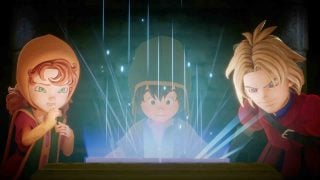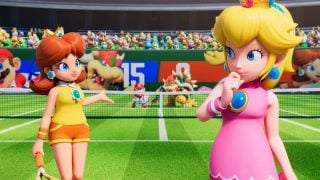The original DS was full of novel, touchscreen based titles. You had games like Rhythm Heaven and Ghost Trick existing due to this baby and using its unique features to certain degrees. Nintendo even tweaked some of their existing series to suit the system, like with Kirby Canvas Curse and both of the Zelda titles that came to the handheld. For all my yen though, the game that took the DS’ strengths and ran with them the farthest was The World Ends with You.
It was full-fledged action RPG that depended on not just the touch screen, but actively paying attention to both of the system’s screens. Some games utilized the added screen space, but I struggle to think of a title that really embraced it quite like The World Ends With You. I played this thing nonstop through high school, not only because of how much I enjoyed its characters and world, but also thanks to how addictive its combat could be.
As I grew older, I appreciated a lot of its ideas more and more, and I never really stopped listening to its soundtrack, but it didn’t seem like Square Enix had embraced the series. The game came to iOS in an updated form and the characters cameoed in Kingdom Hearts, but neither of these moments got to me the way the first release did. Now here we are, with a further enhanced version of that iOS version coming to Switch. The World Ends With You: Final Remix finally got me to step back into Shibuya, and while there’s plenty to love about it, a few key problems hold this release back from being as wonderful as it was before.
You gotta push your horizons out as far as they’ll go
The story of The World Ends With You isn’t so much complex as it is one that likes to throw quick twists and turns at you as you go. You play as Neku, a teenager who wakes up without any memory in an alternate version of Tokyo’s Shibuya ward, caught up in what’s called The Reapers’ Game. What follows is a series of objectives (or Days) that he and his partners must complete or face erasure. Discovering the true nature of this “Underground” Shibuya and why each member of the cast is there keeps the game going along, though some days are longer or more involved than others. There’s also an all new postgame storyline that brings a fresh character into the mix and offers up some trickier battles. It leaves the future of the series somewhat ambiguous, but it does make for a nice extra for anyone who’s already played the game through before.
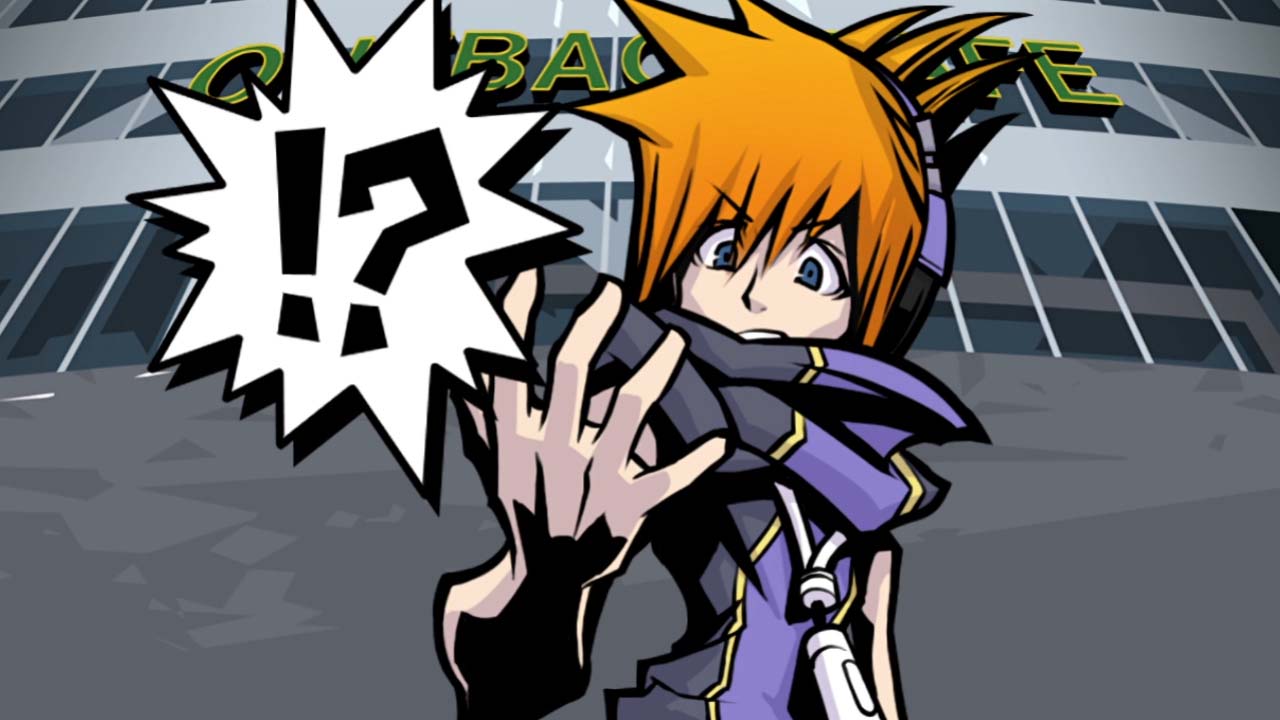
More than anything though this is Neku’s story and his growth as a character is a highlight. Some of the jokes or references come off as just a bit dated now, but the game’s writing has a certain charm, at least from the perspective of someone who played it during its original release. I can see how Neku’s initial standoffish and outright abrasive personality could turn people off, but it’s him breaking out of that hard shell that gives the game not only heart, but relatability despite its foreign, urban-fantasy location.
Shibuya makes for a great backdrop for all of this though, with the game’s stylized and exaggerated take on its fashion, trends, and sensibilities influencing things in multiple ways. You don’t get armor or weapons, but instead new designer clothes and collectible pins to perform attacks. Fights take place on the streets and sidewalks, with storefronts and sky-high buildings as your background. Various real world landmarks are referenced or depicted, and after having visited the real Shibuya in recent years (partly out of reverence for this game), I can say it’s a loving adaptation that anyone can appreciate.
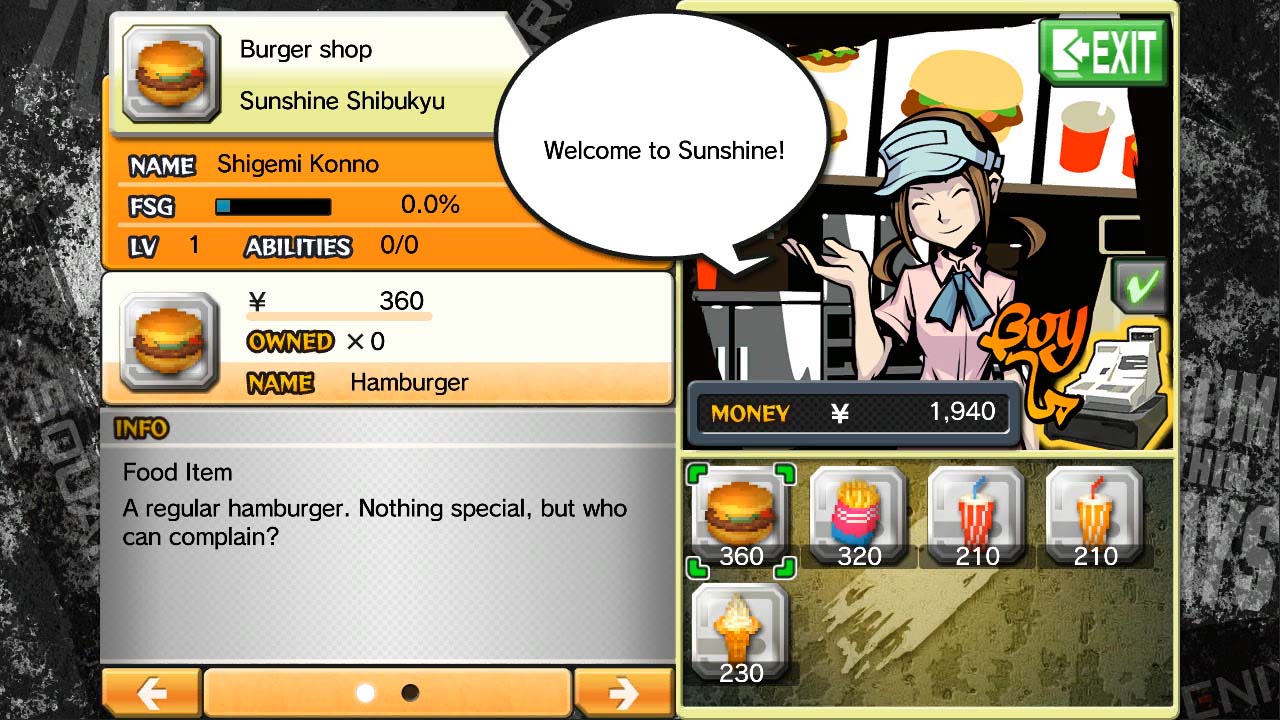
Trust your partner and open up your world
Combat in this version is slightly modified from the original TWEWY. Originally, Neku would fight on one screen while his partner would be on the other, and you’d control Neku via touch and the partner via D-pad inputs. It was an involved and interesting take on the typical active combat system and part of why I loved the game so much. Here though, the single screen means all touch (or Joy-Con gesture; more on that later) controls. There are actually close to no button or stick based controls here, with your partner now relegated to a different kind of rechargeable touch command.
It loses some of the great complexity and theming of the original, but things do work well. There’re plenty of varying types of touch inputs, and you have the ability to customize your load out by collecting and mastering various pins representing your attacks, or Psyches. On top of that, there are some really great ideas here, like a built-in way to chain battle and adjust Neku’s level to affect drop rates. The number of pins also adds a “gotta catch ‘em all” element that I’m definitely addicted to all over again. There’s a bit more visual novel-esque exposition than I remember, but all and all I’d say the gameplay (even in this altered and compromised form) holds up.
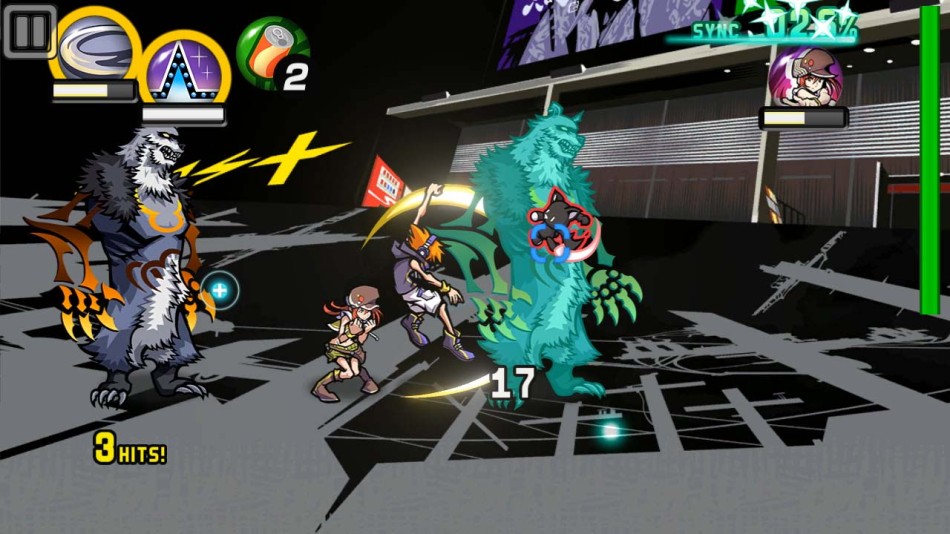
In fact, despite what some of these criticisms might make you think, in some key ways this is the best The World Ends With You has ever been. Nowhere is that expressed more than the visuals, with the new HD art from the previous iOS release making Shibuya and everyone in it look as sleek and stylish as the fashion trends that sway them. A part of me does miss the pixelated look from the DS, but that gave way quick to an appreciation for just how great the game looks on Switch, particularly in handheld mode.
And of course, the part of the game that seems to be unanimously loved no matter who you’re talking to: that soundtrack. As much a representation of its world as anything else in the game, it spans multiple genres while carrying a throughline sound that will find a way into your head. They aren’t all on the same level, with there being both standouts and letdowns, but as a whole it’s unreal how well it meshes with the game itself. Not only do you get the original tracks, but rearranged versions and new songs compared to its original run are there, too. The music of Shibuya is easily the most unquestionable reason why I’m in love with this game’s aesthetic all over again.
You’re out of your vector
So if the story holds up in its own way, the gameplay and mechanics are great and unique (though not as strong as in the original), and the style is top notch; what could possibly hold this back from being a must have Switch game? The biggest hurdle this version stumbles over isn’t the loss of its second screen — it’s the controls.
The World Ends With You on DS was one of the few touch based games I genuinely loved, but that was a smaller system more easily held in one hand. On Switch though, things felt imbalanced due to the larger size and the presence of the Joy-Con. I actually experimented with removing one or both Joy-Con and found that this marks the first Switch title I’ve come across that might be best played with none attached at all.
Past that, playing with taps and slides of your finger (or a compatible stylus) is definitely the ideal way to approached this remix and I even started to enjoy myself like it was 2008 all over again. It was when I decided to move things to the TV, one of the features I was most excited for here, that things fell apart. You aim an on-screen cursor via a single Joy-Con, and for walking around Shibuya or navigating menus it’s fine when it works. In battle though, the loss of precision and tangibility is felt immediately. Your inputs and gestures, even when they work exactly as you want, lack impact.
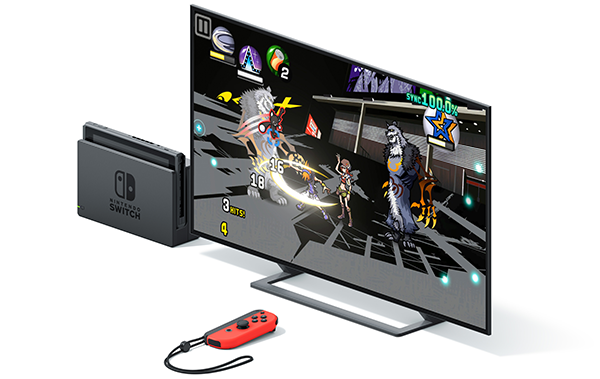
This control mode does have one novelty though, and that’s co-op play. With a second Joy-Con a friend can control Neku’s partner in a given week directly alongside your own actions. It still rewards playing in sync with each other too, creating an interesting back and forth rhythm in theory, even though it’s held back by the same control imprecision issues. Each partner has their own slightly expanded moveset here too, though it doesn’t elevate the experience beyond giving you someone to turn to in disbelief that your flailing actually worked.
On top of that, on multiple occasions the cursor would start to drift even when I’d reset it multiple times or jump back to the home menu. I found some success via placing the controller on a flat surface before re-opening the game, but this drift still happened more frequently than I’d like. Anyone who specifically wanted to experience the game on a big screen might want to hold off and see if this particular issue (hopefully) gets addressed through a future patch.
Shibuya should stay just as it is
While my earlier complaints about the change in how the game plays could be boiled down more to preference, combining all these issues makes Final Remix feel less like the definitive version of what could be one of the best DS games ever made, and more like a new take on it completely. In that way, the “Remix” label is appropriate, and just like a remix it doesn’t always reach the heights of what it’s sampling. By pulling back the complexity, leaning on the existing fan base, and being available on the hottest system around, this could be the version of TWEWY that catches on like the first run deserved.
The World Ends With You: Final Remix makes for one of the most unique Switch experiences by its very nature. Best played in handheld with touch inputs, it shows the versatility of the system and brings back a fan favorite franchise with a fresh layer of HD paint. It drops the ball in some of its newer elements and can’t physically be what it once was due to the loss of a second screen. I may still prefer the original from a gameplay and control perspective, but those looking for the most content-filled, best looking, and best sounding version of this must-play RPG will find that this Remix is still wonderful.
Leave a Comment
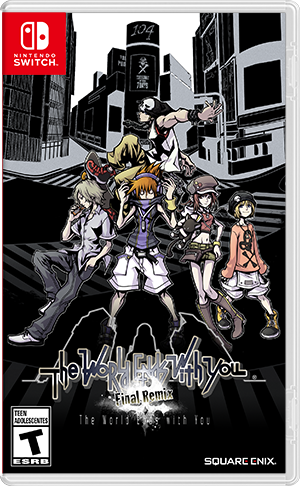
System: Nintendo Switch
Release Date: October 12, 2018
Category: Action RPG
Publisher: Nintendo
Developer: Square Enix

